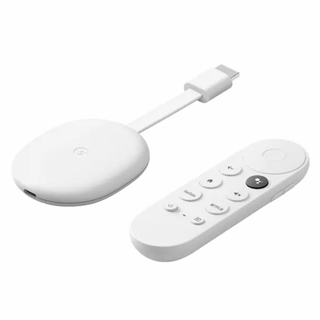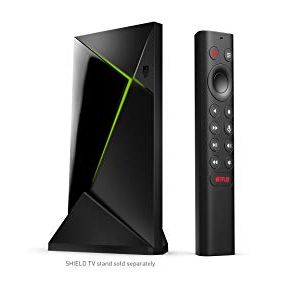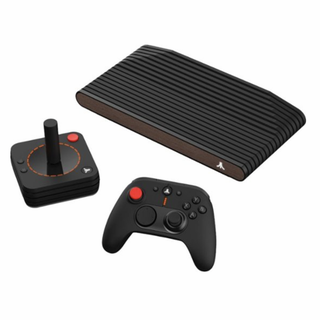Microconsoles have become a particular area of interest for me since their debut in 2010. Perhaps the most interesting part of exploring their brief history has been tracing their roots back to my biggest passion: gaming.
Prior to their arrival, I would have to lug our gigantic family computer to the living room in order to browse the web or use Windows Media Center to stream content to an Xbox 360—there was never a convenient all-in-one media center for televisions. While I grew up in a proud blue-collar household, a lot of my friends came from wealthy families and owned the latest gaming computers and consoles. That was a stark contrast to the HP Mini netbook or family-shared Dell Inspiron tower we had at home. This left me looking for ways to play the latest games on my older hardware. As I turned 11, OnLive and its MicroConsole changed the game. In addition to a Windows App that ran on any PC, this MicroConsole—a streaming stick, plugged into your TV or monitor—let you play the latest AAA games over the internet on low-end hardware, since everything ran on remote servers.
That’s right, OnLive kicked off both the microconsole and cloud gaming revolutions over a decade ago. And even though the performance was of surprisingly high quality with minimal lag and allowed for multiple ways to play (computers, tablets, and the MicroConsole itself), this technology was too far ahead of its time, and it died in 2012. Its death was not in vain, however, as it would lay the foundation for what would evolve into today’s burgeoning cloud-gaming landscape and compact streaming box and stick-based media centers.
Microconsoles are affordable miniature computers that are strong enough to run all kinds of software, from applications to video games. Think of them as the Swiss Army knives of PCs. They can do what most desktops are capable of, such as acting as media streaming centers for your home photos and videos (in addition to subscription services), controlling your smart home, and emulating retro gaming systems up to the power of the original PlayStation—all within a cheap portable body that discreetly tucks away behind any TV or monitor equipped with an HDMI port. Some of the most popular models include the ” data-vars-ga-product-id=”af46e492-b0f0-46df-b059-d4070851f199″ data-vars-ga-product-price=”0.00″ data-vars-ga-product-sem3-brand=”” data-vars-ga-product-sem3-category data-vars-ga-product-sem3-id data-affiliate-network=”{"id":"585e38ac-716f-4f92-9fbc-ca8721de9979","metadata":[],"network":{"id":"469ce69f-4798-416d-9432-eaa9954b4053","name":"Amazon","metadata":[]}}” data-vars-ga-media-type data-affiliate=”true”>Fire TV, Nvidia Shield, and Chromecast with Google TV.
These versatile little gadgets do a lot more than stream subscription services. Over the years, I’ve collected some of the rarest systems, from the PlayStation TV to the Ouya, shuffling these low-end computers between TVs, rooms, and even other countries. With less than $50, you can add an operating system to virtually any screen right now.
You see, OnLive’s failed MicroConsole had to walk so that today’s Fire Stick and Chromecast streaming devices could run. It showed that there was a public demand for a cheap, compact console for gaming and streaming tasks on the big screen. A year after the death of OnLive, Ouya picked up the mantle of an affordable gaming system in 2013. It went on to become a highly successful Kickstarter project with its simple premise—it would run Android applications, streaming services, and mobile games on your TV for cheap. Because this box shipped with the Android JellyBean interface, it could be modified to run all types of apps on any screen. However, the lacking controller, internal components, and a laggy user interface soured the overall package.
This freedom was a step in the right direction, starkly contrasting with streaming set-top box competitors at the time. Sony’s PlayStation TV was another streaming box with a focus on gaming in addition to pushing streaming services like PlayStation TV (its own live internet TV service), Hulu, and Netflix while encouraging casual watchers into gaming. Roku, on the other hand, was making waves with its media streaming boxes that could download streaming apps and basic classic pixel games like Snake and Space Invader knockoffs. But both of these ecosystems were locked down tight with limited app stores and proprietary operating systems, making it that much harder for the idea of an all-in-one entertainment center to gain traction. But then Amazon moved the needle in November 2013 with a well-rounded Fire TV box.
Fire TV was marketed as an Android-based streaming box for enjoying tons of third-party video, music, and gaming apps with Alexa built in for smart home controls and voice search. It retailed for $99 and paired nicely with the $40 Gamepad, which I used often to play a variety of (then) new games from huge publishers like Sega and Ubisoft to indie titles like Hotline Miami on the Amazon Game Store across screens. Amazon brought the concept of a microconsole to a more general consumer market as a streaming device that could also serve as a web browser, game system, and streaming device that others didn’t really nail. In 2014, Amazon further refined the design down to the Fire TV Stick at a lower price that dominated the competition. Its success has paved the way for today’s Fire TV Stick 4K Max, which is one of the best streaming devices you can buy as well as one of the cheapest. It’s loaded up with streaming stick series with firsts like a powerful 750-MHz graphics processor great for 3D gaming, Wi-Fi 6 connectivity for unrivaled network stability, and 2 GB of RAM for snappy operation speed.
Beyond streaming sticks, some cool examples of modern microconsoles include Nvidia’s powerful Shield TV system, which features expandable storage, streams your existing PC game library over GeForce Now’s cloud, and runs on Android TV’s more modifiable operating system. Meanwhile, Atari has risen from its grave with its VCS, a relatively new streaming box and Mini PC hybrid inside the aesthetic of a retro Atari 2600 game system. You can sideload Windows onto it, turn it into an emulation station, and install tons of software.
At the end of the day, these compact streaming boxes are steeped in the rich history of gaming. While these devices are miniature computers capable of doing so many things, weirdly enough, we wouldn’t have gotten here without OnLive’s niche cloud-gaming software and hardware advancements that weren’t used by that many people. So thank you to OnLive, a short-lived startup that forever changed the computing and entertaining industries in such a short span of time.
I’m always game to talk about all things gaming and tech, so feel free to hit me up on Twitter with questions or comments at @Huntai7.
This content is created and maintained by a third party, and imported onto this page to help users provide their email addresses. You may be able to find more information about this and similar content at piano.io







No comments:
Post a Comment